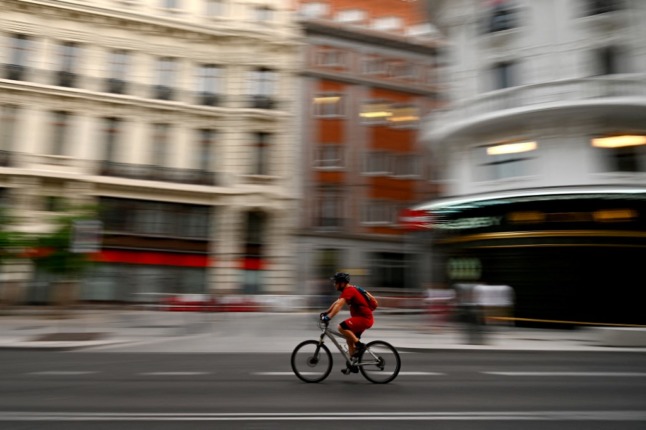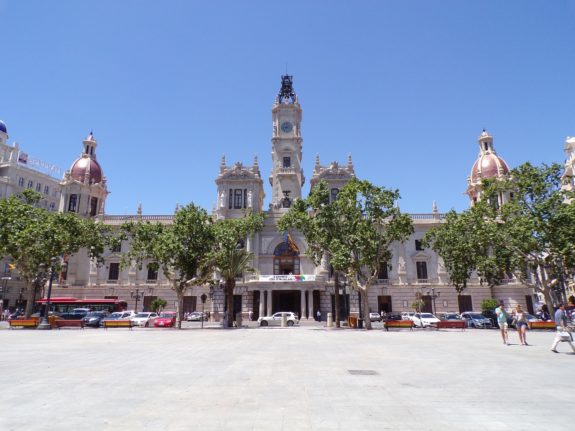Twenty million people in Spain use a bicycle frequently, a rate which has been increasing in recent years.
That’s according to the “2019 Bicycle Barometer” survey carried out by Spain’s Directorate General of Traffic, which found that around 7.6 percent of Spain’s population rode their bikes on a daily basis.
The pandemic has caused bike sales to shoot up by 24 percent in Spain, as people have looked for alternatives to public transport and more time outdoors after Covid lockdowns.
So it’s safe to say that Spain, traditionally a nation of walkers, is embracing cycling as a means of getting around more than ever.
You may not need a licence to cycle in Spain, but cycling laws are part of the country’s traffic code, meaning that there are plenty of cycling offences you could be fined for if you’re not aware of them.
Not wearing a helmet – €200 fine
On interurban roads, often countryside lanes which link towns and cities, wearing a helmet is always mandatory.
On urban roads only cyclists under 16 are required to wear a helmet, although Spanish road authorities recommend always wearing one as it is the best means of avoiding head and brain injuries if you’re in an accident.
Riding on the sidewalk – €200 fine
It’s common to see people riding their bikes on sidewalks in Spain or through pedestrianised areas and squares, but this is in fact a punishable offence.
Has it been properly policed in the past? Probably not, especially in towns and cities which aren’t properly equipped with bicycle lanes.
However, the proliferation of electric scooters and other small mobility vehicles such as Segways, whose riders usually ignore the pavement rules as well, is leading local authorities to clamp down more on these practices.
Not having lights or a reflective vest – €80 to €200 fine
Not using bike lights at night, dusk or dawn can result in a €80 fine in Spain, which can increase to €200 if the person isn’t wearing a reflective vest.
According to the DGT, “compulsory lighting for bicycles consists of a white front position light (or a white reflector), and a red reflector (that is not triangular) behind, both of which must be of approved use (homologados)”.
In 2018, a 78-year-old man in Galicia was fined €200 for using flashing lights rather than still ones, but the DGT has since clarified that this isn’t a punishable offence.
Not respecting road rules – €120 to €200 fine
It may seem obvious but just because a bicycle doesn’t have the same dimensions as a car doesn’t mean that cyclists can overlook general traffic rules.
Ignoring a stop sign, failing to give way, entering a roundabout when you shouldn’t or cycling over a zebra crossing in the same directions as pedestrians (cyclists must get off their bikes for this) are all offences that can incur a fine.
Likewise, cyclists have to give priority at zebra crossings without traffic lights if pedestrians are about to cross.
Cycling in the wrong lane – €100 fine
Cyclists should stick to the right lane and stay clear of the left overtaking lane to avoid a possible fine. The exception to this is if the cyclist is going to turn to the left, in which case they can move over to the left lane.
Failing to indicate with your arms – €200 fine
Cyclists may not be able to use indicator lights to indicate a change of direction as car drivers can, but they should use their arms instead if they want to avoid the possibility of a fine.
This should be done either with the right arm stretched out horizontally or with the left arm bent at an angle.
Surpassing the speed limit – €100 to €600 fine
This may not seem like a common traffic offence for cyclists, but with the speed drop to 30km/h on many urban roads in Spain it’s now a lot easier to get caught out.
If you exceed the stipulated speed limit by 1 to 20 kilometres per hour, you risk a €100 fine. Anything above that and the penalty skyrockets to €600.

Reckless cycling – €200 to €500 fine
Keeping in mind that cyclists are among the most vulnerable road users, Spanish traffic authorities can hand out stiff fines to those who endanger themselves and others with dangerous or careless manoeuvres.
These include everything from only using one hand, to doing a ‘wheelie’ or on countryside roads taking up the whole lane by cycling in a pack rather than behind each other.
Cycling with headphones on – €200 fine
Cyclists out in Spanish nature may assume they can listen to some inspiring music on their headphones to keep them motivated, but this can be just as dangerous and punishable as in urban areas with more traffic. Keep in mind that you can get a fine for only wearing the headphones, even if you weren’t listening to music.
Using a mobile phone – €200 fine
Another tech-related fine that’s a no brainer. Speaking or texting on a mobile phone whilst cycling is a surefire way of catching the attention of Spanish traffic police.
Drunk cycling – €500 to €1,000 fine
As stated earlier, most of the rules that apply to car and large vehicle drivers also apply to bike users, and drink driving is no exception.
Cyclists caught riding with a blood alcohol level of greater than 0.5 grammes per litre, or alcohol in expired air greater than 0.25 milligrammes per litre can be subject to getting a fine.
The higher the alcohol level, the bigger the fine. Logically, it doesn’t involve losing points off your driving licence but the ‘multa’ (fine) is likely to sting.
Riding with another person on the back – €100 fine
Giving a friend a ride on the back of your bike as a favour isn’t legal.
Unless the main rider is carrying a child under 7 sat at the back in an approved bicycle seat, only one person can use a bike in Spain.
READ ALSO:



 Please whitelist us to continue reading.
Please whitelist us to continue reading.
Member comments